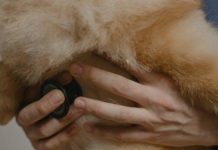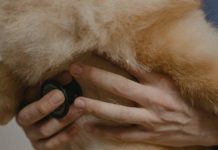Welcoming a new puppy into your home is an exciting and heartwarming experience, filled with wagging tails, playful antics, and boundless affection. As a loving pet owner, ensuring your puppy stays healthy throughout the year is a top priority, setting the foundation for a long and happy life together. This guide is designed to walk you through the essential steps to maintain your puppy’s well-being, from nutrition and exercise to regular veterinary care and socialization. With a warm and caring approach, we’ll explore how to nurture your furry friend, addressing common concerns and offering practical tips to keep that little tail wagging all year round. Whether you’re a first-time pet parent or a seasoned dog lover, these insights will help you create a healthy, joyful environment for your puppy to thrive.
Feeding Your Puppy a Balanced Diet for Optimal Growth
Ensuring your puppy’s diet is both balanced and nutritious is crucial for their development and overall health. Puppies have unique dietary needs that differ significantly from adult dogs. Start by selecting a high-quality puppy food rich in essential nutrients. Look for foods that list meat as the first ingredient, as protein is vital for muscle development. It’s also important to include foods with DHA (an omega-3 fatty acid) for brain development and calcium for strong bones and teeth.
- Portion Control: Follow the feeding guidelines on the puppy food packaging, adjusting as needed based on your puppy’s activity level and growth.
- Regular Feeding Schedule: Establish a consistent feeding routine to help regulate your puppy’s digestion and energy levels.
- Fresh Water: Always provide plenty of fresh water to keep your puppy hydrated.
- Avoid Overfeeding: Overfeeding can lead to obesity and other health issues, so keep an eye on their weight and adjust portions accordingly.
Consult your veterinarian for personalized advice, especially if you notice any changes in your puppy’s eating habits or health. With the right balance, your puppy will thrive and grow into a healthy, happy dog.

Creating a Safe and Stimulating Environment at Home
Creating a haven for your puppy means focusing on both safety and mental enrichment. To ensure your furry friend thrives, consider these essential elements:
- Secure Spaces: Ensure that all areas your puppy has access to are puppy-proofed. This includes securing loose wires, storing cleaning products and medications out of reach, and using baby gates to block off areas that might pose a risk.
- Comfortable Bedding: Provide a cozy, soft bed where your puppy can retreat for naps and rest. This space should be away from high-traffic areas to give them a sense of security.
- Interactive Toys: Stimulate your puppy’s mind with toys that encourage play and problem-solving. Puzzle toys, chew toys, and fetch items are excellent choices to keep them engaged and happy.
- Safe Outdoor Exploration: If you have a yard, ensure it’s fenced and free of toxic plants or hazards. Supervised outdoor time is crucial for exercise and discovery, enhancing their physical and mental well-being.
By blending safety with stimulating activities, you can create a nurturing environment that supports your puppy’s growth and happiness.

Establishing a Regular Exercise Routine for Your Puppy
Creating a consistent exercise routine for your puppy is essential for their physical health and mental well-being. Puppies are bundles of energy, and channeling that energy into structured activities helps in their overall development. Start with short, daily walks to introduce them to the outside world and gradually increase the duration as they grow. Remember, puppies have delicate bones and joints, so avoid high-impact activities until they are older. Interactive play sessions such as fetch or tug-of-war are excellent for building a strong bond while keeping them engaged.
To keep things exciting, incorporate a variety of activities that stimulate both their body and mind. Here are a few ideas:
- Obstacle courses: Set up a mini agility course in your backyard using household items like chairs and broomsticks.
- Hide and seek: Hide treats or toys around the house and encourage your puppy to find them.
- Socialization outings: Visit dog-friendly parks to let them interact with other dogs, which is crucial for their social development.
Consistency is key, so aim to establish a routine that fits your lifestyle and provides your puppy with the exercise they need to grow into a happy, healthy dog. Always pay attention to their cues, and ensure they have plenty of water and rest to recover from their playful endeavors.

Scheduling Consistent Veterinary Check-ups and Vaccinations
To keep your puppy bouncing with health and happiness, consistent veterinary check-ups and timely vaccinations are crucial. Puppies are growing rapidly and need regular health assessments to ensure everything is developing as it should. Early detection of potential issues can save your furry friend from future discomfort. During these visits, your vet will also provide essential vaccinations that protect against serious diseases like distemper, parvovirus, and rabies.
Consider creating a schedule to keep track of these appointments. You can use a calendar app or a physical planner—whatever suits your lifestyle best. Make sure to include:
- Initial check-up: Usually within the first few days after bringing your puppy home.
- Booster vaccinations: These are often needed every few weeks until your puppy is about 16 weeks old.
- Annual wellness exams: Once your puppy is fully vaccinated, these yearly visits help maintain their health and catch any issues early.
Setting reminders for these appointments will ensure that your puppy’s health stays a priority throughout the year.
















